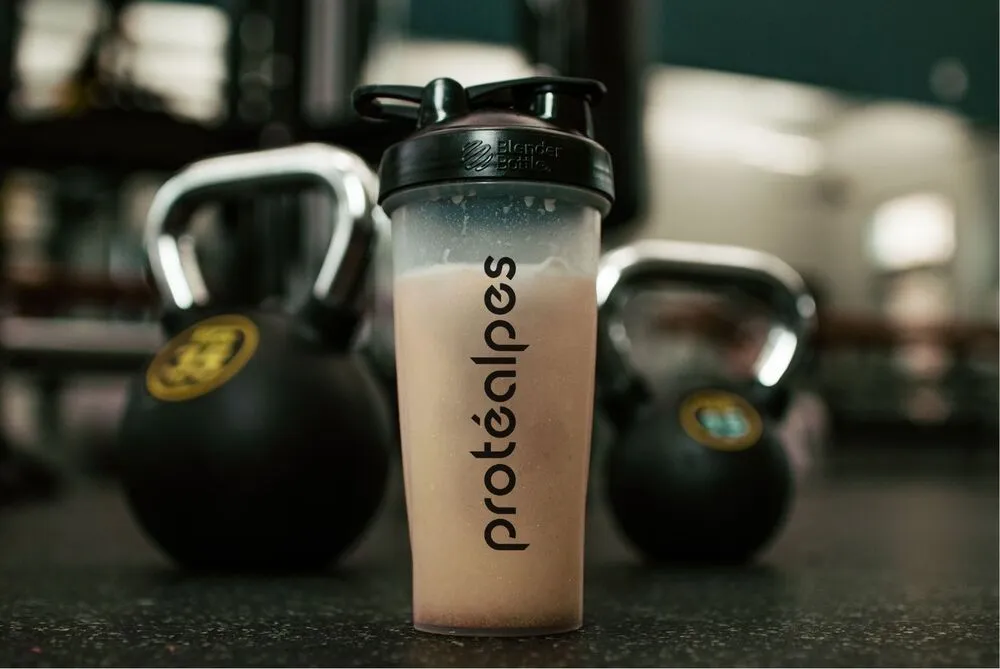Visit creatine is making a big splash in the field of sports nutrition. This dietary supplement effectively enhances physical performance without being considered a doping product. Studies conducted in recent years confirm that it boosts muscular strength during brief, intense efforts.
Its benefits are enough to make it one of the most popular dietary supplements among bodybuilding enthusiasts. However, consumers often forget that this substance will only work if consumed properly. Creatine is not consumed in the same way as whey or casein, and there is no creatine requirement to fill.
The aim of supplementation is to saturate muscle reserves. With this in mind, the supplement can be taken in two stages. You can start with a load phase, and therefore plan to increase your intake. Subsequently, a smaller daily amount is consumed, as a maintenance dose.
The exact dosage for this second phase will vary from person to person. The quantity of creatine to be taken depends on the athlete's weight. For best results, it's best to find out more about creatine monohydrate. In this article, you'll find out all you need to know about these capsules, which are increasingly available on the market.
Creatine: what is it?
Creatine is a non-essential amino acid naturally present in muscle tissue. Our body does not systematically use it for energy production. In fact, the body only draws on our muscle creatine reserves during particularly intense and brief physical efforts. Our creatine reserves are sufficient to last just ten seconds under these conditions. Hence the idea of supplementing and increasing these reserves.
The creatine available on the market is a rather unusual chemical form. This whitish powder most often corresponds to creatine monohydrate. Although there are other forms of this supplement, this one is said to be the best tolerated by the body. What's more, its effects are the best documented. As a result, we advise athletes to prefer creatine monohydrate to creatineethyl ester, for example.
Good to know: Creatine is present in everyday foods, particularly meat, whether red, white or fish. However, these sources do not contain enough creatine for effective supplementation.

As the name suggests, these supplements are chemically produced. Little is known about their manufacturing processes. That said, scientific studies seem to confirm thesafety of creatine monohydrate. No major side effects have been noted at conventional doses. Reason enough for this substance to be sold over the counter.
What are the effects of creatine?
The role it plays in the energy pathway leads to the assumption that creatine provides athletes with more power. This hypothesis has been verified in numerous studies, with researchers concluding that this molecule enhances muscularexplosiveness1. This supplement enables athletes to fully deploy their muscular strength for a short period of time.
Tests in the laboratory and on the training field have shown that creatine improves muscular strength and resistance to fatigue for exercises lasting less than 30seconds1. In athletes, experiments have validated the improvement in runningspeed1. These benefits are even more noticeable during repeated efforts or in events with frequent changes of pace.
In resistance training, this supplementincreases the volume of training, both in terms of the loads lifted and the number of repetitions2. In the event of physical inactivity, creatine can also help to maintain muscle mass and strength.
With all its remarkable effects, creatine seems to have a place in any sport. However, it is best suited to high-intensity sports such as soccer, tennis and field hockey. Of course, it can also be used in bodybuilding to train more effectively. It can be used to boost progress after several weeks of stagnation. In this sense, creatine and weight gain can be indirectly linked.
But how long does it take for creatine to take effect?
The effects of creatine begin to show after 5 to 7 days of regular supplementation with a loading phase (20g/day), or after 2-3 weeks with a standard dosage (3-5g/day).
Variations depend on:
- Pickup protocol (with/without load phase)
- Initial muscle creatine levels (vegetarians often see faster effects)
- Muscle type (type II fibers may respond better)
- Combined with carbohydrates (improves absorption)
- Training intensity (explosive exercises maximize effects)
Full benefits appear after around 28 days of continuous supplementation.

How do I take creatine?
While the scientific literature confirms the beneficial effects of creatine, it also highlights the importance of the method of administration. The gains in physical performance and all the benefits mentioned above can only be observed under a very specific protocol. It is therefore crucial to know how to consume this supplement before hoping to benefit from its effects.
What is the creatine dosage per kg?
Professors Roger Harris and Eric Hultman are the leading authorities on this subject. The former recommends a two-phase approach. During the first 5 days, the subject should ingest 5 g of creatine 4 times a day , or 0.3 g/kg divided into 3 or 4 doses. At the end of these 5 days, the athlete should already be able to saturate his or her creatine reserves. After this "loading phase", the dosage will be increased to 0.03 g/kg to maintain creatine reserves at their highest level.
Professor Eric Hultman, for his part, believes that it is not necessarily necessary to go through the loading phase. By ingesting 3 to 5 g of creatine a day, an athlete will be able to maximize his or her reserves after 4 weeks, and thus benefit from the beneficial effects of this supplement. With this protocol, there is no "creatine dosage per kg", but rather a fixed quantity to be adapted according to your objectives.
In all cases, it's clear that creatine must be taken over thelong term. In principle, this form of supplementation will only be effective after at least 5 days.
Does this mean that you should consume creatine continuously? Specialists advise against this. The supplement should be taken as a 30- to 45-day course of treatment. In order to maintain a healthy metabolism, it's advisable to take breaks of at least 2 or 3 weeks.
Good to know: the time of intake has little impact on creatine's effects. Athletes can ingest it at any time of day. That said, creatine has been shown to interact positively with insulin.
It is therefore advisable to consume the dose with good carbohydrates for better assimilation. For practical reasons, many people consume this supplement just after a meal or after a sports session.
Does reducing the dose cause muscle loss?
Reducing creatine intake does not directly cause muscle loss. When you reduce your intake, your creatine muscle stores gradually return to their baseline level, which may slightly reduce the ability to maintain high training intensity.
The slight decrease in volume you may see is mainly due to reduced intracellular water retention, not loss of muscle tissue. To find out more about the consequences of changing dosage, see our article on stopping creatine.
Do I need to change the doses for a dry run?
Standard creatine dosage can be maintained during a dry phase. Although water retention may temporarily mask muscle definition, the benefits in terms of maintaining strength and muscle mass during a caloric deficit often outweigh this drawback.
If the final goal requires maximum definition, consider gradually reducing or stopping supplementation 4-6 weeks before the deadline.
Does increasing creatine intake have an impact on the brain?
Increasing the dose of creatine beyond the standard recommendations (3-5g/day) does not significantly improve its beneficial effects on the body or, more specifically, on the brain.
Research suggests that standard doses are sufficient to observe positive impacts on cognitive functions. Excessive supplementation brings no additional benefits, and may increase the risk of digestive side effects.
Creatine: what are the health risks?
As mentioned above, creatine poses no health risk1. However, excessive consumption is always accompanied by side effects.
By exceeding the doses indicated above, athletes expose themselves above all to gastrointestinal problems of varying degrees of severity. Expect stomach pains, diarrhoea, flatulence or persistent nausea.

As with whey isolate, creatine is not recommended for people suffering from kidney or liver disease. In people with a predisposition to these conditions, a protein-rich diet is dangerous.
A high-protein diet mayaggravate the underlying symptoms. As creatine is an amino acid, the kidneys and liver may suffer from prolonged consumption. Remember that you need at least 5 days to benefit from its real effects.
When we consume creatine, our cells naturally gorge themselves with water, leading to water retention, notably linked to the rapid renewal of adenosine triphosphate (ATP). But this phenomenon stops as soon as the athlete stops taking the supplement. That's why it's crucial to stop taking the supplement to preserve your metabolism.
So creatine does not make you gain weight in the sense that many people understand. This is simplistic and misleading. This intracellular water retention (mainly in the muscles), generally representing 1-2 kg, is temporary and disappears when supplementation is stopped.
This extra water is not fat, but helps optimize muscle energy metabolism. Creatine also enables more intense training, which in the long term promotes the development of lean muscle mass.
For performance-oriented athletes, this extra "weight" is actually beneficial and should not be confused with unwanted fat gain that would negatively alter body composition.
There are also risks associated with the quality of creatine. As with whey and other protein powders, there are products contaminated with steroids. These can damage the careers of top-level athletes. These athletes often use creatine to prepare for competition. If they subsequently test positive in anti-doping testsall their efforts will have been in vain. It's best to buy a top-quality supplement, certified anti-doping by the Creapure label.
Good to know: creatine consumption must be part of a varied and balanced diet. It is also essential to take part in sporting activities. Regular training sessions are essential to use up stored creatine and avoid aggravated water retention.
Can creatine be taken with other dietary supplements?
This question often comes up, especially if you're looking to build muscle. Creatine does not directly improve mass gain, nor does it influence muscle building.
Can creatine and collagen be taken simultaneously?
Yes, an athlete can take creatine and collagen at the same time without any negative interaction, as their mechanisms of action are different. Collagen supports the health of connective tissue (joints, tendons, skin).
This combination can be particularly beneficial for athletes seeking to optimize their performance while preserving their joints. Both supplements are well tolerated, and their effects complement each other for optimal recovery after training.
Mix whey and creatine
Secondly, even over the very long term, it's important to understand that creatine will only increase the intensity of your workouts. This being the case, protein powders remain indispensable for most athletes. But you still need to know whether it's possible to combine them with creatine.
Combining creatine and whey, or any other product, is perfectly acceptable. As a reminder, most protein powders are derived from milk. These natural dietary supplements can be considered ordinary foods, regardless of their protein content. Nevertheless, it's important to look at their quality. Depending on the product chosen, the presence of additives can lead to a variety of disorders, including recurrent digestive problems.

Even though the quantity of additives may seem low per intake, a daily intake exposes consumers to a high risk. Over the long term, combining creatine with low-quality whey can have an impact on your health.
As a general rule, creatine should be combined with protein powders, as the latter provide essential nutrients for muscle building. They are the basis for mass gain and muscle recovery. In fact, creatine can be dispensed with in many disciplines, whereas whey is essential if you're looking for performance.
When should you choose protein powder rather than creatine?
An increase in creatine reserves will not be beneficial in all sports. As mentioned above, this supplement is most useful in high-intensity sports, where you need to deploy all your physical strength in a short space of time. Although creatine can be useful for recovery or during a period of muscular inactivity3(e.g. injury), it is not, a priori, necessary for endurance sports which do not require sprinting. Examples include trail running.
In these disciplines, the focus is on optimizing muscle recovery. Protein powder is far more beneficial than creatine. In endurance disciplines, more muscular strength does not significantly improve performance. In this case, in addition to protein, theimportance of carbohydrates should also be stressed. Carbohydrate intake affects the amount of glycogen stored. This is the body's main source of energy for long-duration efforts.
Remember that proteins are useful for rapid recovery. The body will use amino acids to repair muscles damaged by exertion. With sufficient protein intake, an athlete will recover more quickly from a grueling workout or race. This recovery time should also become shorter as training progresses.















